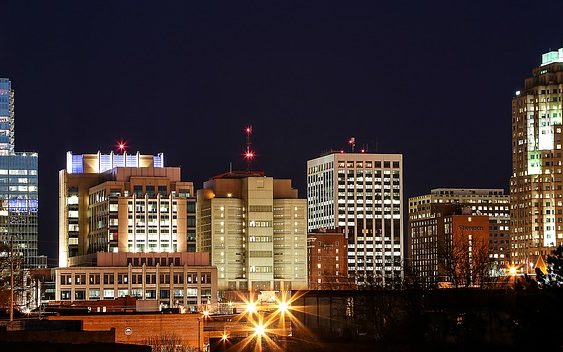4 things about Hurricane Florence that sound like myths. But they’re true.

Plenty of myths about storms are floating around Hurricane Florence. If a “fact” sounds too incredible to be true, then it’s usually not.
But there are exceptions.
Brittany Bell, a meteorologist at ABC11 in Raleigh, helped us show that a few things that sound wrong about Hurricane Florence are actually right.
True: Hurricane Florence is huge, as big as Michigan.
Hurricane Florence may have downgraded to a category 2, but the storm is still massive.
Bell says the size of a hurricane doesn’t correlate with the category rating. That number relies entirely on the storm’s wind speed, or the Saffir-Simpson hurricane wind scale.
Hurricane Florence, she said, is larger than the distance between Charleston, SC, and Raleigh, NC.
The National Hurricane Center measures Florence at about 300 miles wide. Some sources are reporting the storm is actually 500 miles wide, but the two groups measure storms differently. But the NHC measures the area where tropical storm force winds are felt instead of the actual width of the cloud formation, explains Mark Price in The Charlotte Observer
So, if you’re measuring the storm based on clouds, then Hurricane Florence is in fact the size of Michigan, Tennessee, South Carolina, and four times larger than Ohio.
If you are following the same guide as the National Hurricane Center by focusing on where you can feel the storm’s wind, then not so much. That puts the storm closer to the size of Alabama which is 330 miles long, and almost as big as Wisconsin too.

The probable path of Category 2 Hurricane Florence as of 5 p.m. Thursday, Sept. 13, 2018.
National Hurricane Center
True: Hurricane Florence is bringing 10 trillion gallons of water with it.
It’s only natural to expect an absurd amount of rain when a hurricane is coming into town. Except this time, Hurricane Florence is projected to bring 10 trillion gallons of water. Not millions or billions, but trillions.
That’s enough to fill up 15 million Olympic sized swimming pools. It sounds like a lot, but it’s actually not as bad as Hurricane Harvey. Harvey dropped 33 trillion gallons of water in the United States.
It takes about 40 gallons to complete one load of laundry, according to information from the City of Raleigh. The rain Florence is bringing would be enough water to do 25 billion loads of laundry.
Bell says it is “hard to quantify how much rain there is,” but that some places along the coast, like Morehead City, could in fact get up to 40 inches of rain. (This information does not take into account the amount of water from storm surges.)
True: Even a big car can’t get through high water.
A significant number of the deaths during Hurricane Harvey in Houston were actually a result of people trying to drive their cars through flooded areas. People either drowned in their cars, or the water swept them away while they were trying to get out of their cars.
Dr. Mandy Cohen, the director of the North Carolina Department of Health and Human Services warned North Carolinians against using their cars during a press conference with Gov. Roy Cooper.
The National Weather Services reports it only takes 12 inches of water to carry a small car, and 18 to 24 inches to carry a larger car.
People have been leaving the Carolinas coasts this week as Hurricane Florence approaches. A few have come to Rock Hill to wait out the storm. However, it looks like most of the business for area hotels might come from utility workers.
Tom Copeland AP
True: Hurricane Florence got its start near the Sahara desert.
How exactly does one of the hottest deserts in the world help create destructive water storms?
The hot air from the Sahara desert starts to mix with the cooler air in the ocean and other places in the continent. When hot and cold air starts to mix with water, it leads to a convection current, according to NASA. These currents are a result of heat transfer that brings hot water up and cold water down, so there is a cycle going on.
Most of the hurricanes that hit the U.S. do in fact originate near the Sahara. That doesn’t make too much sense considering the Sahara is one of the driest places in the world, but it somehow works according to the National Oceanic Atmospheric Administration.
“A lot of hurricanes do start as coastal storms in Africa,” said Bell. “they get into the ocean and get stronger and organized.”
Did Florence find its start near the coast of Africa?
Yes, said Bell. “We’ve been watching this one for a couple of weeks.”